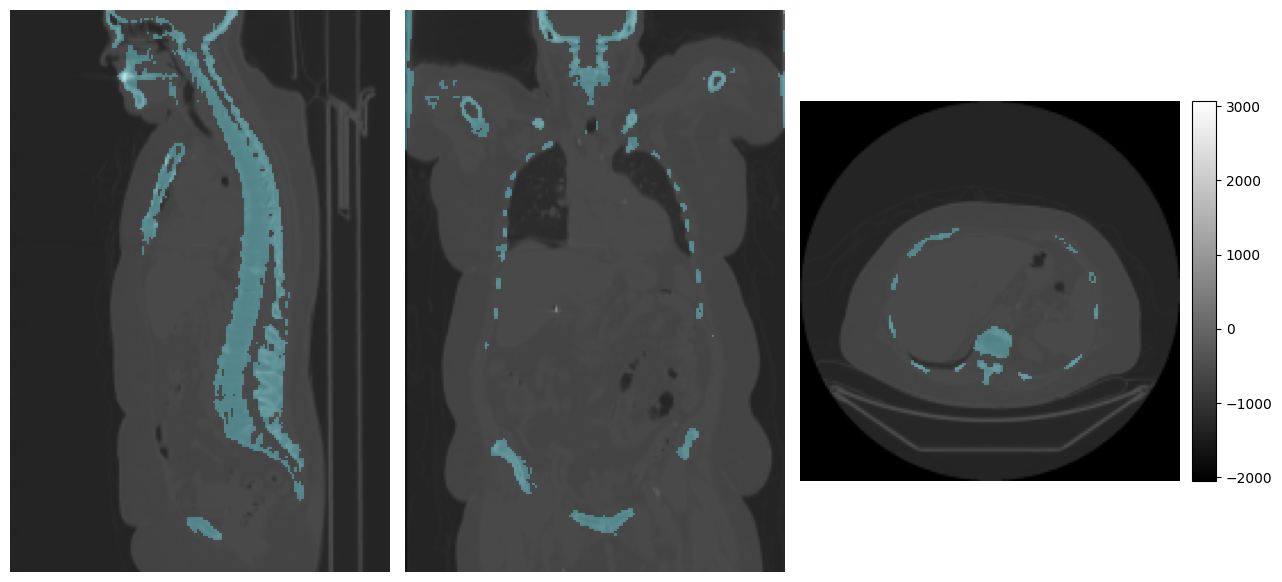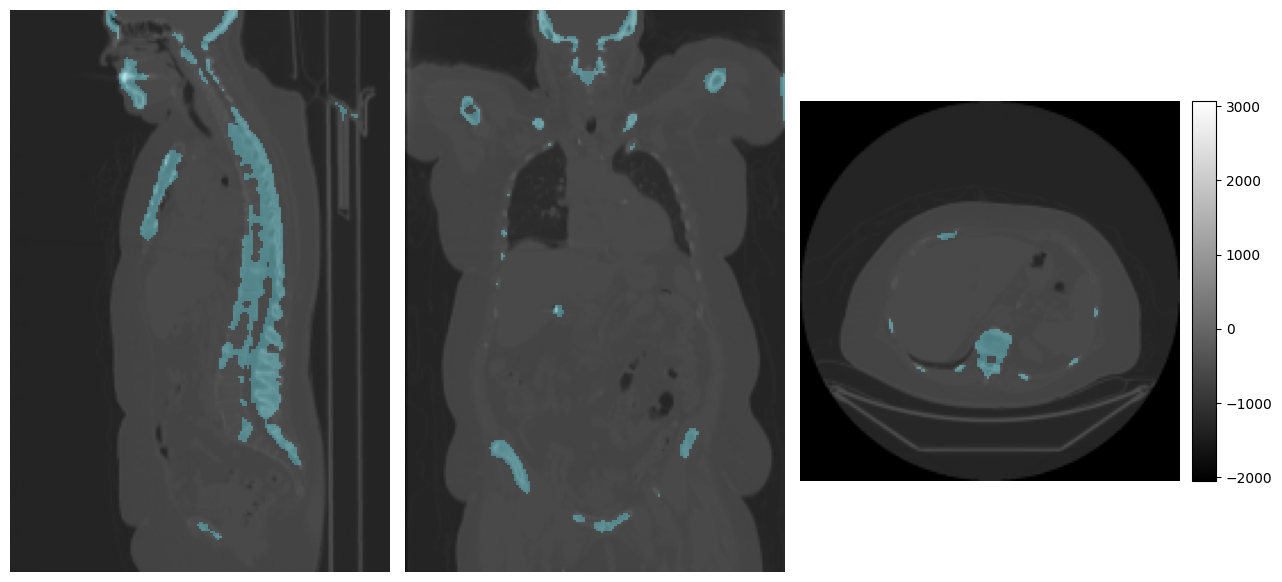Running Model Inference with the ImFusion Python SDK
This tutorial demonstrates the ML inference capabilities of imfusion-sdk.
The imfusion.machinelearning.MachineLearning class allows running a model on some input data while taking care of pre- and postprocessing as well as sampling / tiling. One major advantage of this approach is that this class can reuse the exact same preprocessing that was used for training (see previous notebook) and therefore avoid unexpected deviations in the input images.
It consists of the following building blocks:
ModelFile: filename of the exported (traced) ML model.
Engine: An engine that forwards the preprocessed/sampled input to the machine learning framework that runs the saved model .
Preprocessing: A preprocessing pipeline that matches the (deterministic) pipeline used for training.
Postprocessing: A postprocessing pipeline that performs additional handling of the model output.
Sampling: A strategy for sampling the input and recombining the predictions.
The configuration of a model is controlled by an inference Yaml configuration file.
Example: Inference Yaml Configuration
[1]:
%cat resources/model_onnx.yaml
Version: 5.0
Type: NeuralNetwork
PredictionType: CLASSIFICATION
PredictionOutput: IMAGE
Name: Overfitting Segmentation
Description: Dummy model for the public demo material
# This selects which framework runs the prediction, can be ['pytorch', 'pyonnxruntime', 'pyopenvino'].
# If `imfusion` includes the TorchPlugin and OnnxPlugin then `torch` and `onnx` are also available.
Engine: pyonnxruntime
# Path to the saved inference model relative to this file.
ModelFile: model.onnx
ForceCPU: false # Option for forcing execution on CPU. Default: false.
Verbose: false # Option for enabling additional logging during execution. Default: false.
# Defines the processing pipeline before invoking the model.
# Entries are specified as the names of imfusion.machinelearning.Operation subclasses (but without the `Operation` suffix)
PreProcessing:
- MakeFloat: # Converts the image voxels to float type
- NormalizePercentile: # Normalizes the voxel values to [0, 1] while taking into account only min to max percentile range
clamp_values: '0'
ignore_zeros: '0'
max_percentile: '0.99'
min_percentile: '0.01'
processing_policy: '0'
- Resample: # Resamples the input to the desired target resolution
resolution: 3.0 3.0 3.0
- BakeTransformation: {} # Applies the affine transformation of the input such that the results transformation is the identity
# Defines a sampling strategy to break down large volumes into chunks that the model can handle without going OOM.
Sampling:
- DimensionDivisor: 8 # Pads the image to the next multiple of this number. It is used to make sure that UNet downsampling and upsampling paths produce images of the same size
- MaxSizeSubdivision: 64 # Splits the image in the smallest number of patches of size `MaxSizeSubdivision`. It is used keep VRAM usage under control. Default = -1 to process the entire image at once.
- PixelsOverlap: 16 # Controls the size in pixels of the overlap regions
- RecombineWeighted: true # Accurate prediction recombination method based on cosine decay. If false, predictions are averaged in the overlapping regions
- PaddingMode: Clamp # [Mirror, Clamp, Zero]. Default is Mirror.
# Defines processing that is applied to the output of the model
PostProcessing:
- ArgMax: {} # Converts prediction to a (in this case binary) labelmap
- ResampleToInput: {} # Resamples the prediction to the geometry of the image given in MachineLearningModel.predict
[ ]:
import _engine_plugin_guard
import imfusion
import imfusion.machinelearning as ml
from demo_utils import unzip_folder, mpr_plot
unzip_folder('data/pet-ct-rtstruct.zip')
ct_image, *_ = imfusion.load('data/pet-ct-rtstruct/ct.imf')
bones_segmentation, *_ = imfusion.load('data/pet-ct-rtstruct/bones.imf')
The interface for using MachineLearningModel is quite straightforward: We just need to supply a configuration yaml (shown above) to construct it and then call .predict and pass in the input data.
[3]:
# Specify a path the inference yaml config
# (This is a dummy model prepared for the tutorial, briefly trained only on this example)
inference_yaml_config = 'resources/model_onnx.yaml'
# Set up the ML model
model = ml.MachineLearningModel(inference_yaml_config)
# Run the inference
pred_segmentation = model.predict(ct_image)
imfusion.save(pred_segmentation, 'data/pred_segmentation.imf')
pred_segmentation
[3]:
imfusion.SharedImageSet(size: 1, [imfusion.SharedImage(UBYTE width: 167 height: 167 slices: 247 spacing: 3 mm)])
[4]:
# Visualize the ground truth
print("Target:")
mpr_plot(ct_image[0], labels=bones_segmentation[0])
# Visualize the prediction
print("Prediction:")
mpr_plot(ct_image[0], labels=pred_segmentation[0])
None
Target:

Prediction:

[5]:
# Compute the dice score
dice_score = ml.DiceMetric().compute_dice(pred_segmentation, bones_segmentation)
# dice_score structure: List refers to each image in the image set, in this case only 1
# Dict refers to the label values, 0 = background, 1 = bone.
print(dice_score[0])
{1: 0.645042642699229}